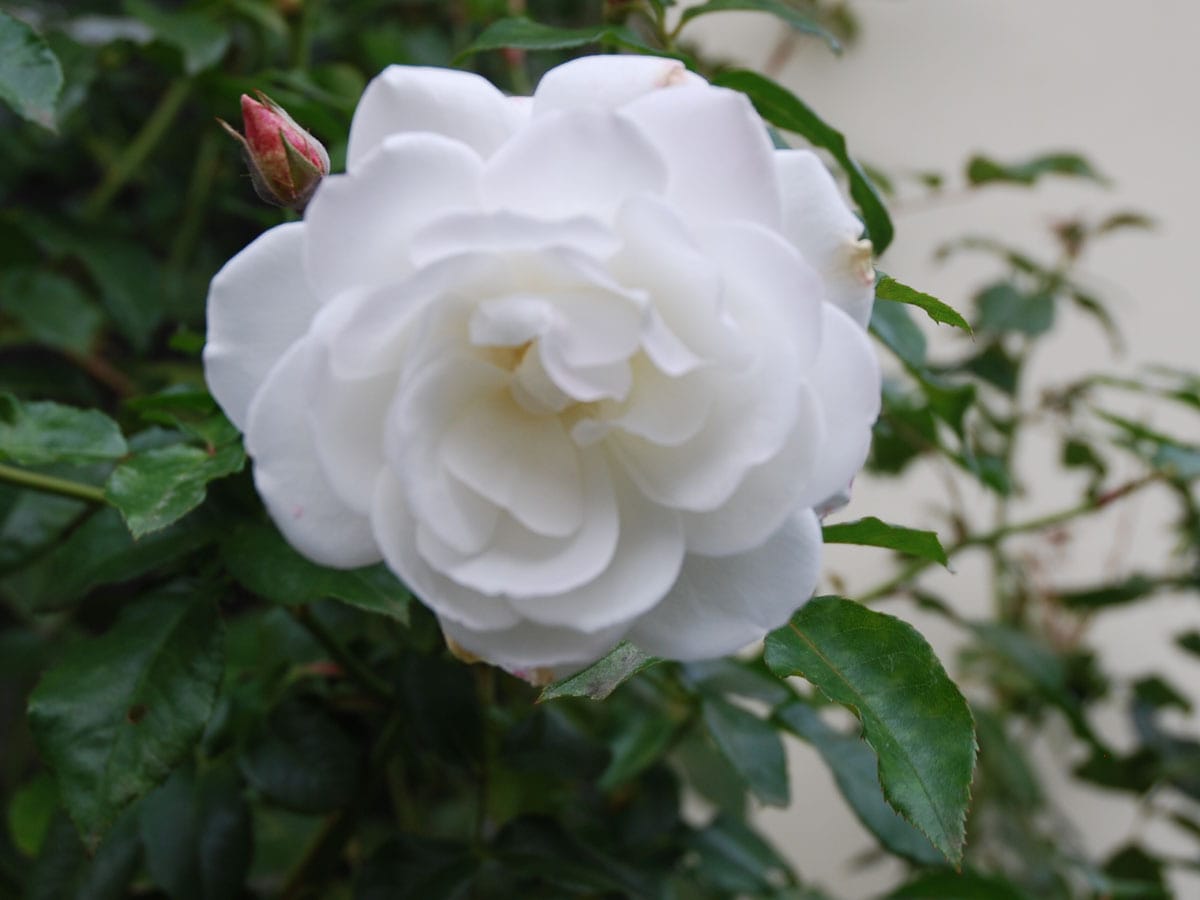Roses are beloved garden staples, but their thorns can be a deterrent. Thornless roses offer the beauty and fragrance of traditional roses without the prickles. This comprehensive guide explores the world of thornless roses, covering their varieties, benefits, planting and care tips, and addresses common misconceptions.
Discovering the Allure of Thornless Roses
Imagine a garden filled with the vibrant colors and captivating scents of roses, but without the fear of painful pricks. Thornless roses offer precisely that! These unique varieties provide all the elegance of classic roses with a gentle touch, making them ideal for gardens of all types. Whether you’re an experienced gardener or a novice, thornless roses can bring a touch of magic to your outdoor space, safely and effortlessly. Rumchata
Key Benefits of Thornless Roses:
- Enhanced Safety: Thornless roses create a welcoming environment for children and pets, eliminating the risk of scratches and injuries.
- Effortless Maintenance: Pruning and handling become significantly easier without the worry of thorns, making these roses perfect for busy gardeners.
- Unmatched Versatility: From climbers that embellish trellises to compact shrubs that define borders, thornless roses come in diverse forms to suit any garden style. You can even find rambling varieties to create breathtaking cascades of blooms.
Planting and Nurturing Your Thornless Roses
- Choosing the Ideal Location: Thornless roses, like most roses, flourish in sunlight and well-drained soil. Select a spot that receives at least six hours of direct sunlight daily, ensuring proper drainage to avoid root rot.
- Planting with Care: Dig a hole twice as wide as the root ball and deep enough for the base of the plant to sit level with the ground. Gently loosen the roots before placing the rose in the hole and backfilling with soil.
- Watering Wisely: Regular watering is essential, especially during dry periods. Water deeply, ensuring the water penetrates to the roots. A good practice is to water when the top inch or two of soil feels dry.
- Nourishing for Growth: Roses benefit from regular feeding. Use a balanced rose fertilizer monthly during the growing season, following product instructions for optimal results.
- Pruning for Health and Beauty: Pruning maintains the shape and encourages new growth. Prune in late winter or early spring before new growth appears, removing dead, damaged, or crossing canes.
Exploring Popular Thornless Rose Varieties
| Rose Variety | Description |
|---|---|
| Zephirine Drouhin | A vigorous climber with fragrant, cerise-pink blossoms. |
| Lutea | A rambling rose with delicate, pale yellow flowers and a sometimes semi-evergreen habit. |
| Peace | A timeless hybrid tea rose with celebrated two-toned pink and yellow blooms. |
| Climbing Iceberg | A nearly thornless climber featuring abundant clusters of pure white flowers. |
Thornless Rose Myths and Truths
- Fragrance: Thornless roses are not less fragrant than their thorny counterparts. Many varieties offer delightful scents.
- Disease Resistance: Thornless roses are just as disease-resistant as other rose types, sometimes even more so.
- Ongoing Research: Scientists continue to develop new thornless varieties with improved disease resistance, unique colors, and enhanced fragrances.
Tips for Thornless Rose Success
- Variety-Specific Pruning: Research pruning recommendations for your particular variety to maximize blooms.
- Companion Planting: Enhance your rose garden’s beauty with complementary plants like lavender or catmint.
- Handle with Gentle Care: While generally less prickly, some “thornless” roses may have small thorns, especially at the base.
Is There a Truly Thornless Rose?
The quest for a completely thorn-free rose is ongoing. While perfectly thornless roses are rare, many “nearly thornless” varieties have significantly fewer and smaller prickles. These varieties offer the beauty of roses with minimal risk of injury, perfect for gardens shared with children and pets. Silence of the Lambs Moth
Benefits of Nearly Thornless Roses
- Increased Safety: Fewer thorns translate to fewer scratches.
- Improved Handling: Pruning and flower arranging become more enjoyable.
- Versatility: These roses, just like their thornier counterparts, come in various shapes and sizes.
Popular Nearly Thornless Varieties
| Rose Name | Type | Color | Bloom Type | Fragrance | Thorn Status |
|---|---|---|---|---|---|
| Amadis | Rambler | Mauve | Semi-double | Not specified | Thornless |
| Bleu Magenta | Climbing Multiflora | Mauve-blue | Not specified | Not specified | Not specified |
| Brother Cadfael | Shrub | Pink | Double | Strong | Nearly thornless |
| Chloris | Climbing Hybrid Tea | Yellow | Semi-double | Slight | Nearly thornless |
| Iceberg | Climbing Hybrid Tea | White | Double | Strong | Nearly thornless |
| Irene Marie | Grandiflora | Pink | Double | Moderate | Nearly thornless |
| Veilchenblau | Climbing Hybrid Multiflora | Purple | Double | Strong | Nearly thornless |
| Yellow Lady Banks | Rambler | Yellow | Single | Slight | Nearly thornless |
Caring for Nearly Thornless Roses
These roses thrive in sunlight, well-drained soil, and regular watering. Monthly fertilization during the growing season supports healthy growth and abundant blooms. Some experts suggest that nearly thornless varieties may be even more vigorous, potentially dedicating more energy to growth and flowering.
Ongoing Research
Research continues to explore thorn development genetics in roses. While a truly thornless rose remains elusive, future breakthroughs are possible.
What is the Most Fragrant Thornless Rose?
The “most fragrant” is subjective and influenced by various factors. However, some thornless varieties consistently receive praise for their captivating scents.
Fragrant Thornless Rose Varieties
| Rose Variety | Color | Fragrance Description | Growth Habit |
|---|---|---|---|
| Zephirine Drouhin | Deep Pink | Sweet, Raspberry-like | Vigorous |
| Blush Noisette | Soft Pink | Sweet, Old Rose | Climbing |
| Yves Piaget | Velvety Pink | Intense, Citrusy, Spicy | Moderate |
Ongoing research aims to understand the complexities of rose fragrance better. New varieties with enhanced fragrance profiles may emerge in the future.
Can You Get a Thornless Climbing Rose?
While a completely thorn-free climbing rose is rare, numerous “virtually thornless” options exist. These roses possess minimal prickles, making them a practical and aesthetically pleasing choice.
Virtually Thornless Climbing Roses
- Zephirine Drouhin: This popular climber is nearly thornless, with occasional small prickles on older canes.
- Aloha: Known for its fragrant apricot-pink blooms and relatively smooth canes.
- Climbing Iceberg: Offers masses of white flowers and fewer thorns than many other climbing roses.
Choosing a Climbing Rose
Selecting a climbing rose involves balancing various factors such as bloom color, fragrance, disease resistance, and thorniness. If minimal thorns are a priority, some compromises on other characteristics might be necessary. Ongoing research in rose breeding is likely to lead to new varieties with varying thorn levels and improved qualities.
This guide provides a comprehensive overview of thornless roses, empowering you to create a beautiful and safe rose garden without the prickles.
- Unlock Elemental 2 Secrets: Actionable Insights Now - April 2, 2025
- Lot’s Wife’s Name: Unveiling the Mystery of Sodom’s Fall - April 2, 2025
- Photocell Sensors: A Complete Guide for Selection and Implementation - April 2, 2025

















1 thought on “The Complete Guide to Thornless Roses: Growing & Enjoying Roses Without the Pricks”
Comments are closed.